Abstract
BACKGROUND: Despite its current recognition as a major health concern, little has been published about obstructive sleep apnea syndrome (OSAS) as a health problem in public healthcare systems where limited resources, language and cultural differences may present barriers to detection and treatment. OBJECTIVE: To describe patients referred for suspected OSAS in a large county-funded healthcare system. METHOD: A retrospective, descriptive observational study that included all patients referred for an OSAS evaluation between September 2000 and September 2002. RESULTS: Only 123 patients were referred and 115 completed an evaluation during the two-year period: 99% met OSAS diagnostic criteria, which was severe in 79% and frequently complicated by related comorbid conditions. CPAP acceptance was lower than in the previous series, especially among Hispanics. CONCLUSIONS: The findings suggest that referral for OSAS evaluation was limited to those most severely affected and raise the possibility of underdetection and undertreatment in the ublic sector.
Full text
PDF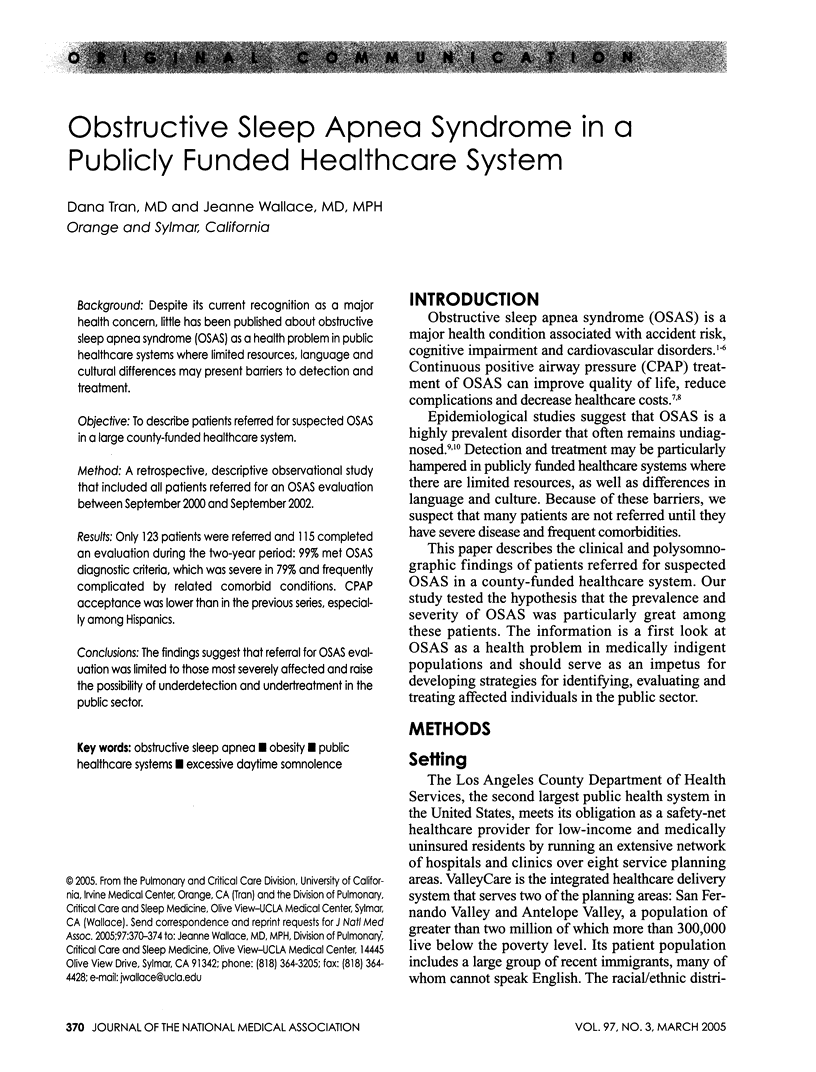
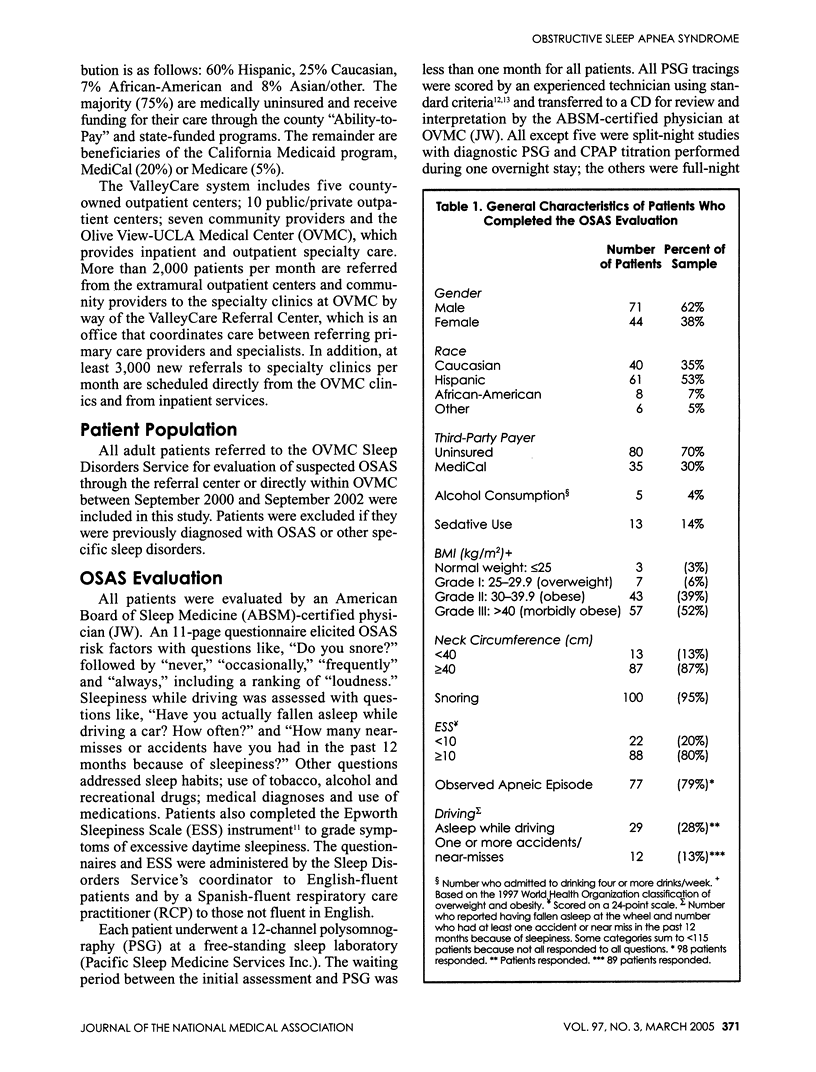
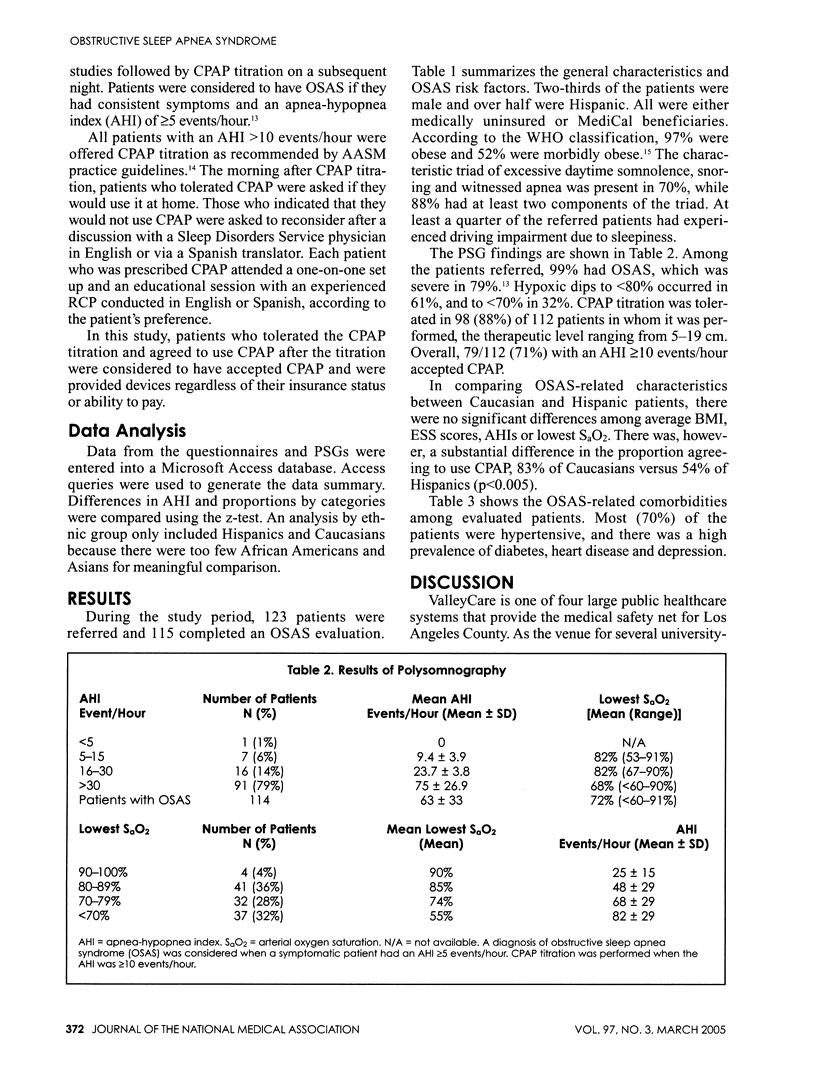
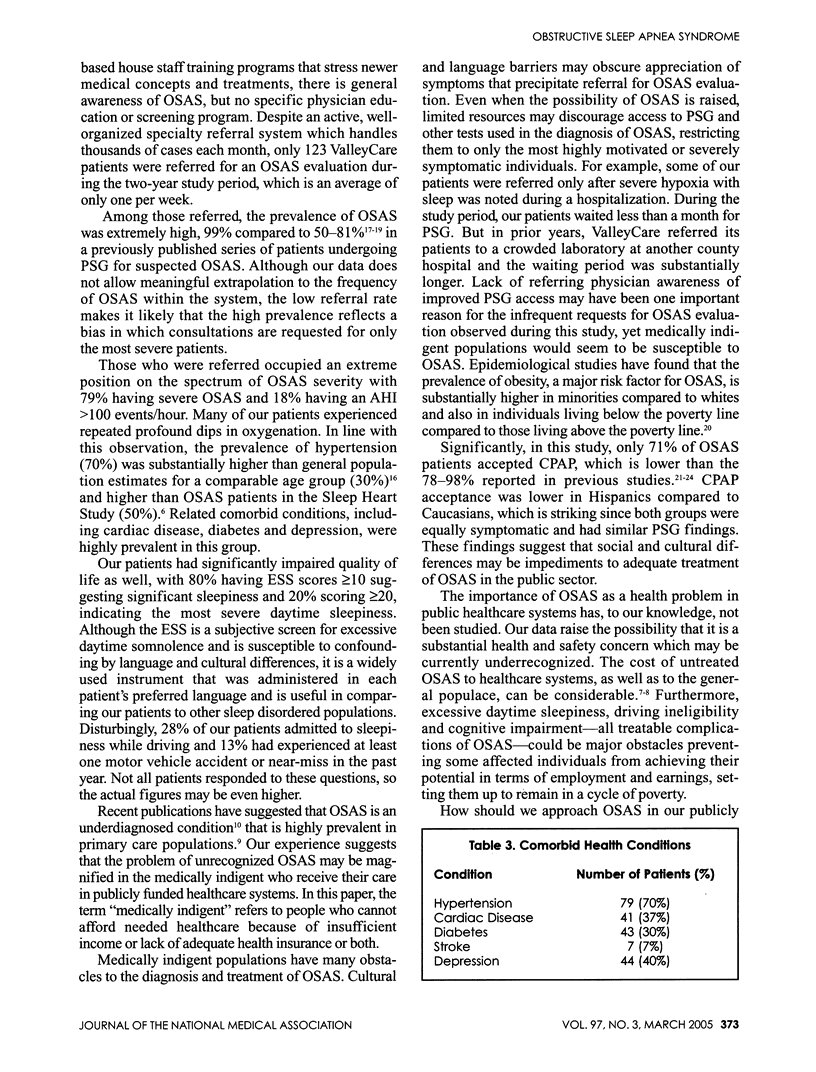
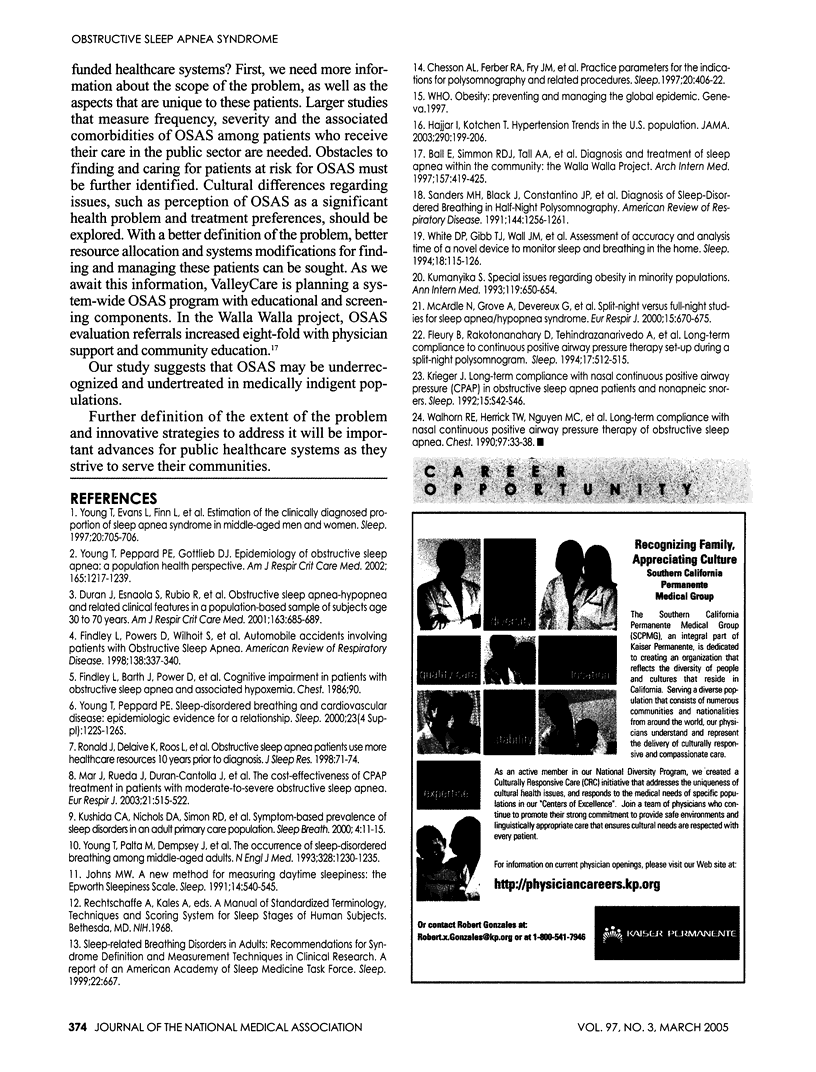
Selected References
These references are in PubMed. This may not be the complete list of references from this article.
- Durán J., Esnaola S., Rubio R., Iztueta A. Obstructive sleep apnea-hypopnea and related clinical features in a population-based sample of subjects aged 30 to 70 yr. Am J Respir Crit Care Med. 2001 Mar;163(3 Pt 1):685–689. doi: 10.1164/ajrccm.163.3.2005065. [DOI] [PubMed] [Google Scholar]
- Findley L. J., Unverzagt M. E., Suratt P. M. Automobile accidents involving patients with obstructive sleep apnea. Am Rev Respir Dis. 1988 Aug;138(2):337–340. doi: 10.1164/ajrccm/138.2.337. [DOI] [PubMed] [Google Scholar]
- Hajjar Ihab, Kotchen Theodore A. Trends in prevalence, awareness, treatment, and control of hypertension in the United States, 1988-2000. JAMA. 2003 Jul 9;290(2):199–206. doi: 10.1001/jama.290.2.199. [DOI] [PubMed] [Google Scholar]
- Johns M. W. A new method for measuring daytime sleepiness: the Epworth sleepiness scale. Sleep. 1991 Dec;14(6):540–545. doi: 10.1093/sleep/14.6.540. [DOI] [PubMed] [Google Scholar]
- Kumanyika S. K. Special issues regarding obesity in minority populations. Ann Intern Med. 1993 Oct 1;119(7 Pt 2):650–654. doi: 10.7326/0003-4819-119-7_part_2-199310011-00005. [DOI] [PubMed] [Google Scholar]
- Mar J., Rueda J. R., Durán-Cantolla J., Schechter C., Chilcott J. The cost-effectiveness of nCPAP treatment in patients with moderate-to-severe obstructive sleep apnoea. Eur Respir J. 2003 Mar;21(3):515–522. doi: 10.1183/09031936.03.00040903. [DOI] [PubMed] [Google Scholar]
- McArdle N., Grove A., Devereux G., Mackay-Brown L., Mackay T., Douglas N. J. Split-night versus full-night studies for sleep apnoea/hypopnoea syndrome. Eur Respir J. 2000 Apr;15(4):670–675. doi: 10.1034/j.1399-3003.2000.15d08.x. [DOI] [PubMed] [Google Scholar]
- Practice parameters for the indications for polysomnography and related procedures. Polysomnography Task Force, American Sleep Disorders Association Standards of Practice Committee. Sleep. 1997 Jun;20(6):406–422. [PubMed] [Google Scholar]
- Ronald J., Delaive K., Roos L., Manfreda J. H., Kryger M. H. Obstructive sleep apnea patients use more health care resources ten years prior to diagnosis. Sleep Res Online. 1998;1(1):71–74. [PubMed] [Google Scholar]
- Waldhorn R. E., Herrick T. W., Nguyen M. C., O'Donnell A. E., Sodero J., Potolicchio S. J. Long-term compliance with nasal continuous positive airway pressure therapy of obstructive sleep apnea. Chest. 1990 Jan;97(1):33–38. doi: 10.1378/chest.97.1.33. [DOI] [PubMed] [Google Scholar]
- White D. P., Gibb T. J., Wall J. M., Westbrook P. R. Assessment of accuracy and analysis time of a novel device to monitor sleep and breathing in the home. Sleep. 1995 Feb;18(2):115–126. doi: 10.1093/sleep/18.2.115. [DOI] [PubMed] [Google Scholar]
- Young T., Palta M., Dempsey J., Skatrud J., Weber S., Badr S. The occurrence of sleep-disordered breathing among middle-aged adults. N Engl J Med. 1993 Apr 29;328(17):1230–1235. doi: 10.1056/NEJM199304293281704. [DOI] [PubMed] [Google Scholar]


